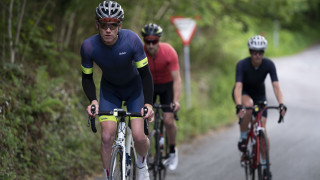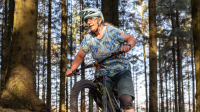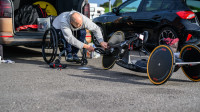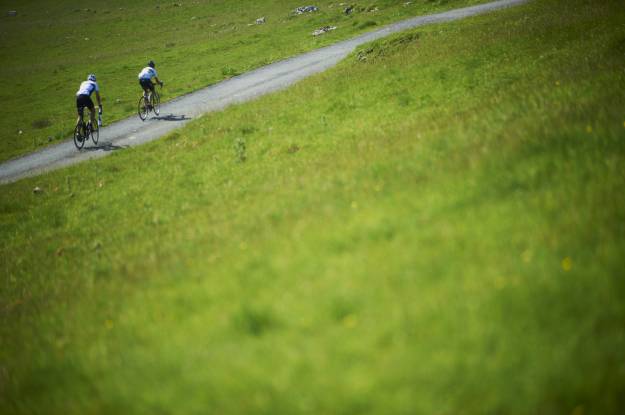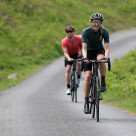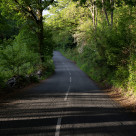Knowledge Level: Intermediate
Long climbs can gradually wear you down but a short brutally steep ramp can quickly force you off your bike and have you walking. Add cobbles or poor road surfaces into the equation and steep climbs can be a test of technique as well as fitness. Tackle steep climbs by following our top tips.
Gearing
If steep climbs are on the agenda, even top climbing professional riders will have their mechanics fit compact chain sets and wide ranging rear cassettes, so, don’t think you are wimping out by doing the same. You will always hear claims from some riders about standard gearing being fine for any climb but why muscle up, expending unnecessary energy when you can spin in relative comfort.
Pacing
Even though the distance covered on a steep climb may be small, slower speeds can mean you are slogging at it for five minutes or more. If the gradient has really ramped up, then power and heart rate zones usually go out of the window as you just try to keep your bike going forwards.
However, you still need to try to pace your effort. Hold back near the bottom, select a low gear early and try to build your effort through the climb to peak when you reach the crest. Take advantage of any flatter sections to catch your breath, even a couple of metres of respite can make all the difference.
If you know that your event has a number of short and sharp climbs, sessions such as ramped five minute intervals will definitely benefit you.
Body position and technique
If you’ve got low enough gearing to allow you to stay seated, bend your elbows to drop your chest towards your handlebars. This will prevent your front wheel from unweighting, while still keeping weight on your back wheel for traction.
Eventually though, a real brute of a climb is likely to force you out of the saddle. If it’s wet or the surface is poor, you’ll need to avoid having your weight too far forwards or your rear wheel may spin out. Keep your weight back, hovering over the saddle. Keeping your pedal stroke smooth, not choppy, will also help maintain traction.
Mountain biking is excellent for developing an understanding of the relationship between body position, pedalling technique and traction. Finally, avoid excessive rocking of the bike from side to side, as this wastes energy and reduces traction.
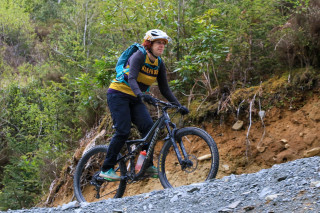
Leave a gap
If you are in a group of riders, the best place to be when you hit a short and potentially slippery climb, is on the front. This is why the pace of the peloton picks up so much in the lead up to the climbs during events such as the Tour of Flanders.
Being on the front allows you to look ahead to pick that best line and means that you won’t be brought to a halt by a rider ahead. However, not everyone can be on the front and, in a sportive, large numbers of dispersed riders mean that there isn’t really a front.
As you reach the bottom of the climb, back off slightly and allow a bit of a gap to the rider in front. This will allow you a better view of the road ahead and mean, if they fail to keep riding, that you will have a better chance of being able to avoid them.
Drop tyre pressure
Running your tyres 10-15 psi lower than normal can significantly improve your grip. Also consider wider 25-28mm tyres if your frame can accommodate them.
Momentum
Do everything you can to carry momentum into a steep climb. Research the route you are riding and the lead in to any significant climbs. You don’t want to turn a blind corner in your big chainring and suddenly be confronted by a wall looming immediately ahead.
Work on good cornering technique to hold speed into a climb and make sure you shift down early in anticipation but not so early that your legs spin out.
Use the road
If it is safe and doesn’t obstruct or endanger yourself or other road users, you can use the road to flatten climbs. Tight bends and hairpins are always less steep if you ride a wide line and, on straight sections, zig-zagging from side to side can really help if things get really desperate.
Strength
Some additional off the bike work to develop upper body and functional trunk strength can definitely help on the steepest climbs, especially when you’re grinding away out of the saddle. Try this strength routine from the EIS Strength and Conditioning coaches.
High gear / low cadence hill repeats are key workouts in a number of our training plans and are excellent for developing cycling specific strength.
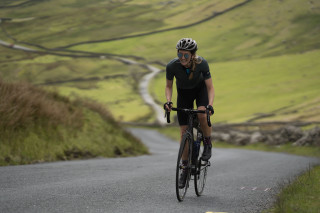
Weight
As the gradient increases, so does the detrimental effect of excess weight on your bike and body. Shaving grams off the bike can be an expensive exercise but simple measures, such as emptying your water bottles before an especially steep climb or avoiding carrying unnecessary kit, can help. To shed a few pounds off your waist is definitely easier on your wallet.
Save your energy
If you know there’s a killer climb coming up, recover as much as possible in the kilometres before it. Use good group riding skills to avoid expending unnecessary energy and stick to your tested heart rate or power zones for easy riding (Zones 1-2). Have a drink and spin your legs fast in a low gear to loosen them off ready for the big effort to come.
Mind games
You have got to be mentally tough to climb steep hills, especially if you are attempting one that has defeated you in the past. Try to stay positive, don’t think about past failures, keep your head up, breath in a controlled and rhythmic manner and, for as long as possible, keep relaxed.
Set targets on the climb, such as trees or lampposts and give yourself a little pat on the back each time you pass one. Some riders keep a tune in their head to detract from the pain and to keep their rhythm and others put in a slightly harder dig every third pedal stroke. Find what works for you and remember, it can’t go on forever.
Attack
A big gamble unless you know the hill well but some short and steep climbs are best dealt with aggressively. Attack hard, maximising momentum, use a big gear and power over the crest. Get it right and it can feel amazing but misjudge it and you can come to a grinding painful halt, stuck in an inappropriate gear and gasping for breath. Also, big efforts like this add up over a long ride so, use them wisely.

